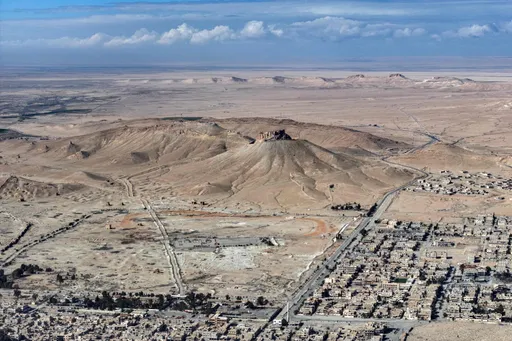The world saw it and heard it. Last week, hundreds of Jewish extremists marched through the streets of Jerusalem, shouting “death to Arabs” as they attacked Palestinians and their homes.
Members of Lehava, a far-right Jewish group, clashed with Palestinians just days after the start of the holy month of Ramadan during which Muslims fast till sunset.
The images and videos shared on Twitter show what’s no longer a secret - that Israel, which has kept an iron-fisted military control in Jerusalem since the occupation in the 1960s, uses disproportionate force against the Palestinians.
One particular picture doing the rounds on social media shows Israeli police officer in riotgear dragging a Palestinian man, while a Jewish boy with payots is escorted with an arm around his shoulders.
But when it comes to the coverage of the events of the past week during which more than 100 Palestinians were injured, the US media continues to toe Tel Aviv’s line.
For instance, the influential The New York Timesreported the events as clashes and put the blame squarely on the Palestinaians when it wrote that Lehava goons retaliated after TikTok videos emerged “showing attacks on religious Jews”.
It failed to mention that ultra-nationalist Jews have for years used violence and intimidation to force Palestianians to leave their homes.
Biased media coverage that depicts Israeli authorities almost always “retaliating” to Palestinian “agression” is nothing new.
A 2019 study by 416Labs, a Canadian data analytics firm, found that US media was two-and-half times more likely to present the Israeli point of view in the headline than the Palestinian postion.
The study reviewed nearly 100,000 headlines over 50 years from five major publications - Chicago Tribune, Los Angeles Times, New York Times, Washington Post, and Wall Street Journal.
It found that the word “terror”, which is almost always attributed to Palesntinian attacks, appeared three times more than the word “occupation”.
An extremist onslaught
In a private WhatsApp group, the Lehava members wrote “we must break their faces, bury them alive” before they marched near Palestinian-dominated areas last Thursday.
IfNotNow, a human rights NGO, called the Lehava action a “pogrom”.
“Palestinians who came to protest this march were met with tear gas and smoke grenades from Israeli police, sending them a clear message about what happens when they demand to be recognised as humans,” it said in a scathing statement.
IfNotNow pointed out a recurring play of narrative - the one which the Times followed - and which implies that Jewish extremists were simply responding to attacks by Arabs while ignoring the perpetual Israeli occupation of Palestianian territories.
The US press hardly ever mentions that the West Bank, Gaza Strip and East Jerusalem are under the supervision of Israeli military, which controls their movement with barricades and road checkpoints.
Most of the world views Israel’s occupation as illegal.
Tel Aviv has gradually expanded illegal settlements, which are built on Palestinian farm lands, adding to the grievances of the Muslim Arabs.
The Washington Post, another influential American daily, was no different in its coverage of the events. The Palestianians had already been clashing with the police, it reported. A video “appeared” to show Palestinains attacking a Jew but Jewish youth “allegedly” attacked a Palestinian home, the article said.
And who can forget the the Times headline for a story it published at the height of the 2014 tensions when the Israeli military fought with armed Palestinian factions.
An Israeli missile hit a cafe and killed eight Palestinian soccer fans who had gathered to watch a World Cup match between Argentina and the Netherlands.
“Missile at Beachside Gaza Cafe Finds Patrons Poised for World Cup”, was the headline of the Times article, which was changed to “In Rubble of Gaza Seaside Cafe, Hunt for Victims Who Had Come for Soccer” after a social media uproar.
For years, the Israeli government has used its PR machinery and expat Jewish community to exert influence over the editorial policies of US media houses.
“On one occasion, (former) Israeli Prime Minister Ehud Barak met with the editorial staff of a Chicago newspaper and took them to task for articles they had printed on the Israeli–Palestinian conflict,” Edward Abington, a US diplomat, told a UN panel in 2003.
“Present at the meeting were important Jewish businessmen who threatened to pull their advertising. This pressure can have a strong impact on editors.”
























